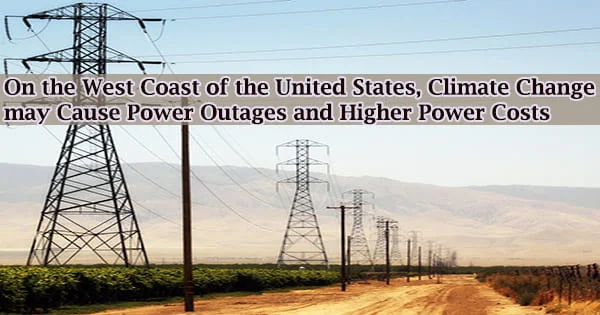A new study finds that increasing global warming from one to two degrees Celsius by mid-century could put about 25% more people at risk from tropical cyclones. Hurricanes and typhoons are already among the most destructive natural disasters in the world, threatening an estimated 150 million people each year. Population growth, in addition to climate change, increases tropical cyclone exposure, particularly in coastal areas of East African countries and the United States. Given the combined impact of climate change and population growth, there is untapped potential to protect a changing global population.
“If we combine population growth with two degrees Celsius global warming, we could see an increase of approximately 40% more people exposed to cyclones in 2050,” says Tobias Geiger, lead author of the new study to be published in Nature Climate Change. “As the world’s population is expected to peak around the mid-century mark, more people will face more intense cyclones as a result of climate change, putting that higher population at greater risk.”
Hurricanes and typhoons are already among the most destructive natural disasters in the world, threatening an estimated 150 million people each year. If we combine population growth with two degrees Celsius global warming, we could see an increase of approximately 40% more people exposed to cyclones in 2050.
Tobias Geiger
The global goal is to keep warming well below two degrees Celsius, but compared to unmitigated climate change, even reaching two degrees Celsius 50 years later could result in a very different outcome, as an interdisciplinary team of scientists from Germany, Switzerland, and the United States discovered in a computer-based analysis: On a global scale, population models predict an unforced, regular decline in cyclone-prone areas until 2100.
As Geiger emphasizes, this would partially compensate for the increased exposure caused by warming: “If we reduce greenhouse gas emissions rapidly and achieve two degrees Celsius of global warming by 2100, we can limit the increase in people at risk of cyclones to 20%. This finding is significant because it shows that reducing global warming has the potential to postpone severe tropical cyclone impacts until the late second half of the century when far fewer people will be at risk.”

Timing is key when assessing exposure to cyclones
The scientists examined the combined effects of demographic development and climate change on people exposed to tropical cyclones in the study and discovered that the timing of when certain warming levels are reached becomes critical.
The results are even more visible at the national level, according to Johannes Gütschow: “Our model predicts, in unprecedented detail, that by 2050, all countries at high risk of tropical cyclones will have increased exposure. We discovered exposure changes of nearly 300 percent in some East African countries, up to 100 percent in the United States, and a significant increase in the Arabian Peninsula due to projected population growth. This will almost certainly result in more cyclone damage in the United States, while other severely affected world regions may face increased poverty and forced migration.”
This picture changes in less rapid warming scenarios: Delaying two degrees of warming to 2080 or 2100, in line with projected population decline, would result in a reduction of exposed population in the Caribbean and East Asia, particularly in Japan, China, and the Korean peninsula, when compared to a scenario in which two degrees of global warming occurs already in 2050. Johannes Gütschow continues: “Essentially, our computer model can calculate the global and national impacts of any given warming scenario, as well as the implications for the number of people at risk from tropical cyclones. Our findings are likely to hold true for a variety of other climate extremes whose occurrence is determined solely by absolute warming rather than timing.”
Informing the UN climate summit COP26 on re-considering national contributions
This can also inform decisions at the 2021 UN World Climate Summit, COP26, which will be an opportunity to reconsider the Paris Agreement’s insufficient Nationally Determined Contributions (NDCs): “The current NDCs scenario would result in about two degrees of warming around mid-century and a continuous rise in warming thereafter,” says Katja Frieler, co-lead of PIK’s Transformation Pathways Research Department. “According to the NDCs, the number of people at risk of cyclones would continue to rise throughout the century, for example, in hurricane-prone areas of the United States.”
Frieler emphasizes: “Emission cuts that limit global warming to 1.5 degrees Celsius could protect over 1.8 billion people from tropical cyclones until the end of the century, compared to the warming under the current proposed emission cuts. As a result, it is critical to reducing greenhouse gas emissions as soon as possible in order to keep as many people safe as possible.”
















